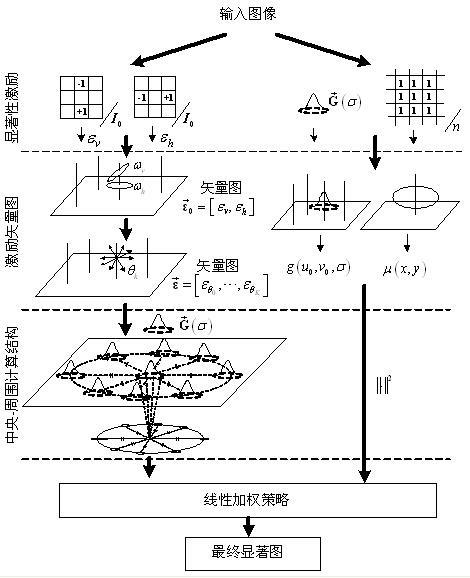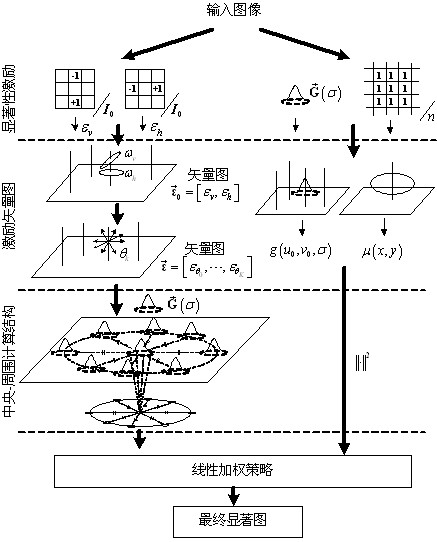Vision significance detection method based on Weber's law and center-periphery hypothesis
A Weber's theorem, saliency technology, applied in the field of visual saliency detection, can solve problems such as no biological model
- Summary
- Abstract
- Description
- Claims
- Application Information
AI Technical Summary
Problems solved by technology
Method used
Image
Examples
Embodiment Construction
[0054] The present invention will be further described below in conjunction with accompanying drawing.
[0055] Such as figure 1 As shown, the specific steps of a visual saliency detection method based on Weber's theorem and central-peripheral assumption are as follows:
[0056] Step (1) adopts color transformation method to extract the original image in CIELAB space l color components, a color component maps and b Color component map; the color transformation method described is a mature technology.
[0057] Step (2) is calculated according to Weber's theorem l color components, a color component maps and b The horizontal gradient difference excitation value of each pixel in the color component image;
[0058] The method for calculating the horizontal gradient differential excitation value is specifically:
[0059] For a pixel in a single color component image , its horizontal gradient differential excitation value Expressed as:
[0060]
[0061] in for pixe...
PUM
 Login to View More
Login to View More Abstract
Description
Claims
Application Information
 Login to View More
Login to View More - R&D
- Intellectual Property
- Life Sciences
- Materials
- Tech Scout
- Unparalleled Data Quality
- Higher Quality Content
- 60% Fewer Hallucinations
Browse by: Latest US Patents, China's latest patents, Technical Efficacy Thesaurus, Application Domain, Technology Topic, Popular Technical Reports.
© 2025 PatSnap. All rights reserved.Legal|Privacy policy|Modern Slavery Act Transparency Statement|Sitemap|About US| Contact US: help@patsnap.com



